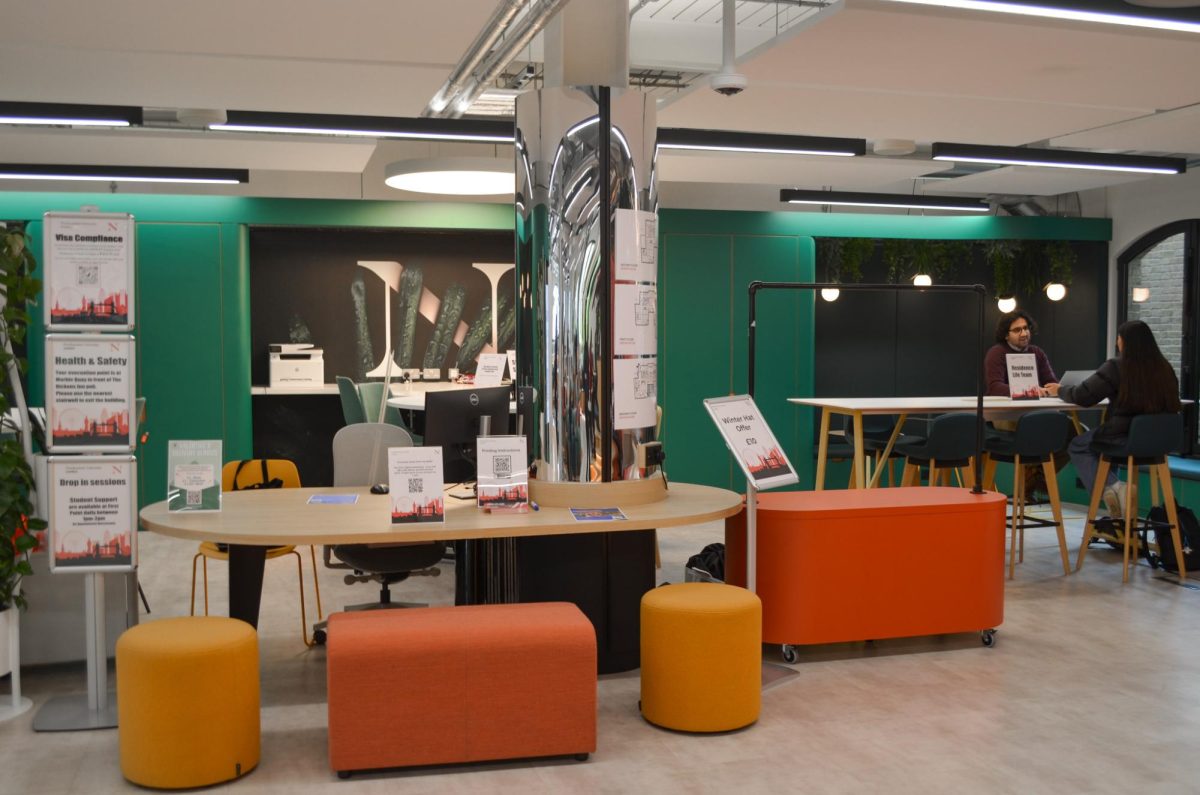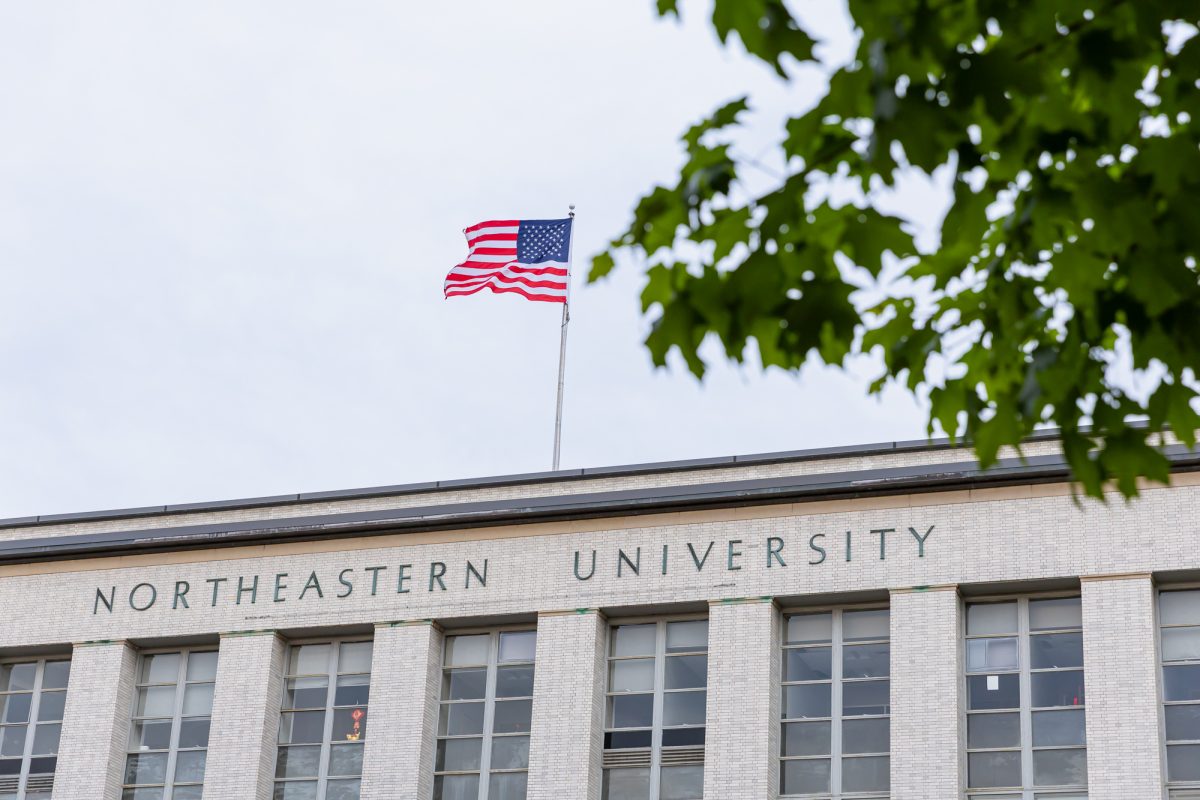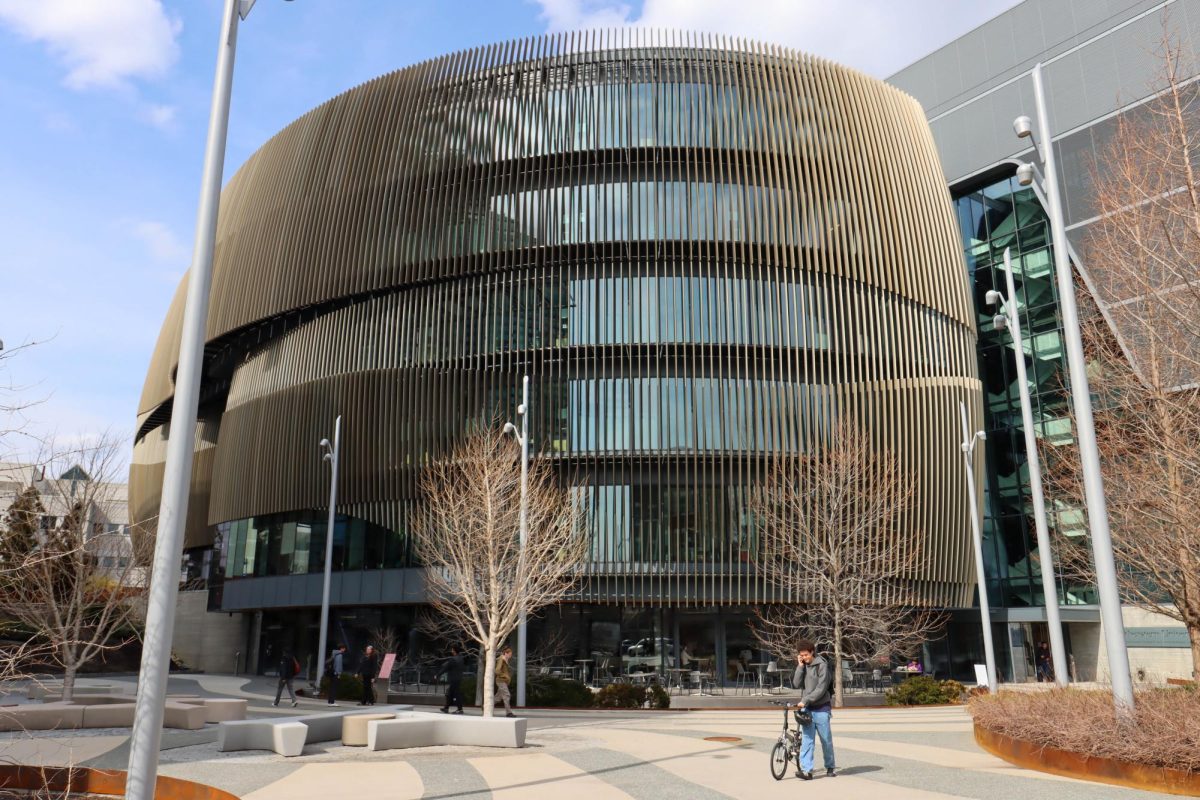Worms, drawn in charcoal, are crawling across walls, overlapping and suffocating each other. Pieces of billboard posters and film are tangled around the two-dimensional insects while the background is strewn with bits of Astroturf.
“Crawlers 6,” an art exhibit by Northeastern professor Sophia Ainslie, opened March 9 at the Kingston Gallery in the South End and is the sixth and largest incarnation of her “Crawlers” exhibit.
“As a kid, I would play with ants and worms,” said Ainslie, who grew up in South Africa. “Actually, I still play with ants and worms,” she added jokingly.
The inspiration for her work grew from the artist’s interest in nature and recycling. Her 2005 exhibit, “Tide,” which included old detergent bottles gathered into a spilling cascade of trash, was described by The Boston Globe as having risen like a “junkyard daisy.” Ainslie has since adopted that phrase as her moniker.
“Tide” was an example of Ainslie’s exploration of society’s wastefulness. She said it began below the Earth’s surface and grew upward. The theme is in contrast with “Crawlers 6,” which takes the opposite direction.
“My work has gone from the surface down to the earth,” she said. “With ‘Tide’ I put bales of plastic in people’s face, but ‘Crawlers’ is more of nature.”
Ainslie said her inspiration for the show grew from a worm’s natural way of life.
“Worms are the ultimate recycler,” she said. “Earthworms consume waste to produce the minerals necessary for life – that’s even how they propel themselves for transportation.”
Ainslie began work on this installation two years ago. The earthworms are composed of charcoal sketches, often erased and then resketched to show the passage of time. They are hypermagnified to show how worms, often considered insignificant, have an important purpose.
The worms overlap each other, showing the compressed nature of Boston’s urban environment. Many people today don’t feel a connection to the Earth, Ainslie said.
“The feel of congestedness is very important,” she said. “I feel I have a very full, tumultuous life. People here have a business of being busy and lose the connection to nature.”
“Crawlers 6” begins with a Japanese-influenced landscape painting, which she said is the “landscape of memory.”
“Memory is not linear,” she said. “It’s distorted – it comes in flashes and facets. Memory can become more present and active, like lights flashing in a night club.”
The exhibit has an earthy focus, but also uses more defined shapes. Her art is composed of rectangles placed together, which can be taken down and reassembled, much like the decomposition of the Earth.
Ainslie said she believes the natural and industrial worlds can coexist.
“Working with grid structures became very important,” she said. “I’m using both the mechanic and the organic. I tried to fight the mechanical for a long time, but structure is in everything and you can’t fight it.”
The exhibit was constructed with the help of Jaime Klein, a freshman visual arts major, and Amy Bourke, a freshman photography major. The two women began installing the exhibit the Sunday before it opened. They mapped the numbered rectangles of the worms on the floor before hanging them up.
“My involvement was strictly construction-oriented. I didn’t create anything of my own for the show,” Klein said. “Rather I was helping her put together her large pieces that she had to transfer in pieces from her studio.”
Klein said she is supportive of Ainslie’s work.
“I liked the ideas behind Sophia’s artwork even though they weren’t my own vision,” she said. “I wanted to help her express them in her show. I think people will love the exhibit.”









